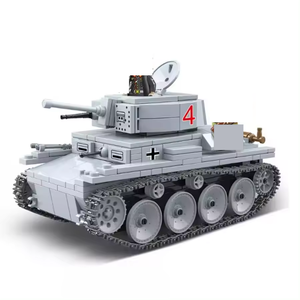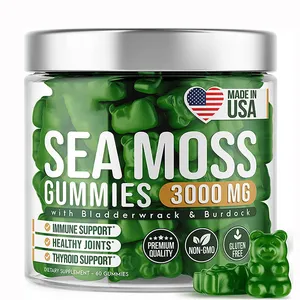Phổ biến trong ngành của bạn






Fengda 20000 M3-200000 M3 quy mô lớn DIESEL nhiên liệu nước bể chứa chất lỏng cố định mái nổi
1.000.000,00 US$ - 9.000.000,00 US$
Đơn hàng tối thiểu: 1 Bộ







Thép Tấm Thép Mạ Kẽm Cho Thủy Lợi Chữa Cháy Cá Trang Trại Tùy Chỉnh Modular Xi Lanh Thép Bể Nước Giá
80,00 US$ - 150,00 US$
Đơn hàng tối thiểu: 1 Mét khối
Vận chuyển mỗi chiếc: 200,00 US$







Fengda 30 M3-10000 m3 dung tích lớn bể chứa thép carbon lớn
12.000,00 US$ - 500.000,00 US$
Đơn hàng tối thiểu: 1 Bộ







BDF GSC Ngầm Tank 10000 20000 50000 Lít Lít Gallon Modular Lắp Ráp Ép Thép Nước Lưu Trữ Tank
60,00 US$ - 70,00 US$
Đơn hàng tối thiểu: 1 Mét khối







Chất Lượng Cao SS 304 316 Thép Không Gỉ Modular Phân Đoạn Trang Trại Bể Nước Giá 10000 Lít Thực Phẩm Lớp Lớn Bể Nước
70,00 US$ - 80,00 US$
Đơn hàng tối thiểu: 1 Mét khối






SEMBO Xe Tăng Ww2 Biến Hình 2 Phong Cách 207008 Xe Tăng Bọc Thép Và Khối Lắp Ráp Xe Tăng Hạng Trung M4 Bộ Đồ Chơi Gạch
8,98 US$ - 10,19 US$
Đơn hàng tối thiểu: 18 Cái






Mới đến 1:14 nhiều người chơi chiến tranh xoay pin theo dõi máy hồng ngoại áo giáp nước bom diễn viên đóng thế xe tăng với ánh sáng
Sẵn sàng vận chuyển
19,90 US$
Đơn hàng tối thiểu: 1 Hộp
Vận chuyển mỗi chiếc: 98,12 US$






Hồng ngoại chiến đấu Xe tăng đồ chơi 2.4G RC bọc thép chiến đấu bắn súng xe tăng âm thanh với
Sẵn sàng vận chuyển
6,85 US$ - 7,78 US$
Đơn hàng tối thiểu: 24 Cái
Vận chuyển mỗi chiếc: 17,04 US$






Bọc Thép Xe Tăng Nhựa Mini Xây Dựng Khối Đồ Chơi Cho Trẻ Em Gạch Bộ Gạch Trẻ Em Bán Buôn Quà Tặng Giáo Dục Khác
Sẵn sàng vận chuyển
7,49 US$ - 7,88 US$
Đơn hàng tối thiểu: 16 Cái
Vận chuyển mỗi chiếc: 4,79 US$






Goldmoc quân sự APC gạch mô hình đồ chơi MOC-56857 người ngoài hành tinh xe tăng m577 tự lắp ráp gạch xây dựng khối đồ chơi
Sẵn sàng vận chuyển
22,82 US$ - 29,34 US$
Đơn hàng tối thiểu: 1 Bộ
Vận chuyển mỗi chiếc: 20,69 US$






Sán Đầu Nhà Cung Cấp Quân Đội Xe Tăng Đồ Chơi Liên Xô Union Nga Vừa Xe Tăng T62 Xe Tăng Chiến Đấu 427Pcs Tương Thích Thương Hiệu Lớn Với 2 Người Lính
4,92 US$ - 5,54 US$
Đơn hàng tối thiểu: 10 Hộp
Vận chuyển mỗi chiếc: 6,09 US$


Mô Hình Mồi Nhử Bơm Hơi Tùy Chỉnh Xe Tăng Bọc Thép Đạo Cụ Ảo
Sẵn sàng vận chuyển
4.287,17 US$ - 4.501,54 US$
Đơn hàng tối thiểu: 1 Cái
Vận chuyển mỗi chiếc: 436,64 US$





XINGBAO Khối Xây Dựng Quân Đội Sery Bộ Đồ Chơi Xây Dựng Làm Vua Cho Xe Tăng Quân Đội Cada
6,60 US$ - 7,00 US$
Đơn hàng tối thiểu: 1 Cái



Hot Bán Xingbao ABS Khối Xây Dựng 06043 Võ Sĩ Bọc Thép Xe Quân Đội Quân Dòng Xe Tăng Đồ Chơi Đồ Chơi Cho Bé Trai Quà Tặng Cho trẻ Em
12,00 US$ - 12,50 US$
Đơn hàng tối thiểu: 12 Cái






Đồ Chơi Điện Xe Chiến Đấu Bọc Thép Trôi Dạt Xe Tăng Điều Khiển Từ Xa Điều Khiển Từ Xa Xe Tăng Bom Nước Chiến Đấu Đồ Chơi
10,35 US$ - 11,12 US$
Đơn hàng tối thiểu: 120 Hộp
Vận chuyển mỗi chiếc: 16,99 US$






Đồ Chơi Xe Hơi Điều Khiển Từ Xa Hiện Đại Cho Trẻ Em Bộ Xe Bom Điện Bọc Thép Bộ Đồ Chơi Xe Tăng Quân Sự Điều Khiển Từ Xa
14,73 US$ - 15,95 US$
Đơn hàng tối thiểu: 90 Hộp
Vận chuyển mỗi chiếc: 583,46 US$






Woma Đồ Chơi C0846 Xây Dựng Khối Quân Đội Xe Tăng Mô Hình Quân Đội WW2 Lắp Ráp Xe Tăng Đồ Chơi Cho Cậu Bé
10,40 US$ - 12,24 US$
Đơn hàng tối thiểu: 1 Hộp
Vận chuyển mỗi chiếc: 68,05 US$






Wange nhựa quân đội các lockheed xm808 Twister đồ chơi quân sự gạch xây dựng khối thiết lập Đồ chơi xe tăng khối cho bé trai chiến tranh
2,68 US$ - 3,08 US$
Đơn hàng tối thiểu: 1 Hộp
Vận chuyển mỗi chiếc: 20,69 US$






WANGE 3661 Đồ Chơi Quân Sự Mô Hình Lắp Ráp Xe Bọc Thép Đồ Chơi Brock Xây Dựng Giáo Dục Thông Minh Cho Trẻ Em Quà Tặng Sinh Nhật
4,50 US$ - 5,50 US$
Đơn hàng tối thiểu: 24 Cái
Vận chuyển mỗi chiếc: 1.459,59 US$





Xem cử chỉ cảm biến điều khiển từ xa Xe crosswise diễn viên đóng thế xe đồ chơi điều khiển từ xa xe tăng phun nước Xe bọc thép
Sẵn sàng vận chuyển
13,00 US$ - 18,00 US$
Đơn hàng tối thiểu: 2 Cái
Vận chuyển mỗi chiếc: 60,50 US$






JJRC q126b đồ chơi Trôi Dạt bọc thép xe chiến đấu xe tăng chiến đấu điều khiển từ xa điều khiển từ xa nước chiến đấu bom đồ chơi
9,62 US$ - 11,55 US$
Đơn hàng tối thiểu: 6 Cái
Vận chuyển mỗi chiếc: 7,92 US$




RC đồ chơi Trôi Dạt bọc thép xe chiến đấu diễn viên đóng Thế RC Xe tăng điều khiển từ xa nước chiến đấu nước Bom xe tăng đồ chơi
12,16 US$ - 12,42 US$
Đơn hàng tối thiểu: 60 Cái





2023 xem cử chỉ cảm biến điều khiển từ xa Xe crosswise diễn viên đóng thế xe đồ chơi điều khiển từ xa xe tăng phun nước Xe bọc thép
Sẵn sàng vận chuyển
13,00 US$ - 18,00 US$
Đơn hàng tối thiểu: 3 Cái
Vận chuyển mỗi chiếc: 30,16 US$






WW2 Quân Đội Xe Tăng Đồ Chơi Lt-38 Đức Ánh Sáng Xe Tăng 535 Mảnh Vũ Khí Xe Cho Bé Trai Xây Dựng Kit Xe Tăng Quân Đội Mô Hình Xây Dựng Khối
Sẵn sàng vận chuyển
5,51 US$ - 6,10 US$
Đơn hàng tối thiểu: 5 Cái
Vận chuyển mỗi chiếc: 9,49 US$






Bán Buôn Quà Tặng Giáo Dục Khác Bọc Thép Tank Nhựa Mini Xây Dựng Khối Đồ Chơi Cho Trẻ Em Gạch Bộ Gạch Trẻ Em
5,77 US$ - 6,02 US$
Đơn hàng tối thiểu: 60 Cái
Vận chuyển mỗi chiếc: 7,42 US$





Wange Nhựa Quân Đội M1128 Súng Di Động Hệ Thống Đồ Chơi Quân Đội Gạch Xây Dựng Khối Thiết Lập Đồ Chơi Tank Khối Cho Bé Trai Chiến Tranh
3,27 US$ - 3,67 US$
Đơn hàng tối thiểu: 1 Hộp
Vận chuyển mỗi chiếc: 22,53 US$





PINBO Xe Tăng Chiến Đấu Chính Ww2 M1A2 77003 Xe Bọc Thép Toàn Địa Hình Đồ Chơi Lắp Ráp Xe Tăng L Đồ Chơi Trẻ Em Quân Đội
14,50 US$ - 15,00 US$
Đơn hàng tối thiểu: 10 Cái






Chiến Tranh Thế Giới 1543 + Pcs Bọc Thép Xe Chiến Đấu Mô Hình Xây Dựng Đồ Chơi Đức Xe Tăng Xây Dựng Khối Kit Chơi Thiết Lập Trẻ Em Cậu Bé Quân Đội Thiết Lập
11,96 US$ - 13,30 US$
Đơn hàng tối thiểu: 4 Cái
Vận chuyển mỗi chiếc: 3,66 US$






Wange Nhựa Quân Đội Boxer Bọc Thép Xe Đồ Chơi Quân Đội Gạch Xây Dựng Khối Thiết Lập Đồ Chơi Tank Khối Cho Bé Trai Chiến Tranh
3,04 US$ - 3,44 US$
Đơn hàng tối thiểu: 1 Hộp
Vận chuyển mỗi chiếc: 19,35 US$






Nhà Máy Bán Hàng Trực Tiếp Xe Tăng Quân Đội Xây Dựng Khối Xây Dựng Đồ Chơi Cho Cậu Bé Quân Đội Khối Xây Dựng Quân Đội Khối
5,77 US$ - 6,02 US$
Đơn hàng tối thiểu: 60 Cái
Vận chuyển mỗi chiếc: 7,42 US$






Xe Tăng Thay Đổi Phong Cách Sống Còn Chiến Tranh 2 SEMBO 207007 Xe Tăng Bọc Thép Toàn Địa Hình Đồ Chơi Xây Dựng Xe Tăng Da Báo Khối Quân Đội
8,98 US$ - 10,19 US$
Đơn hàng tối thiểu: 18 Cái






Đức quân đội người đàn ông mô hình xe tăng gạch nhựa vũ trang lực lượng xây dựng khối thiết lập trẻ em xe tăng xe bọc thép tự làm Xe tăng mô hình kit đồ chơi
Sẵn sàng vận chuyển
5,52 US$ - 6,17 US$
Đơn hàng tối thiểu: 5 Cái
Vận chuyển mỗi chiếc: 9,49 US$






Wange Nhựa Quân Đội Bọc Thép Xe Đồ Chơi Quân Đội Gạch Xây Dựng Khối Thiết Lập Đồ Chơi Tank Khối Cho Bé Trai Chiến Tranh
4,19 US$ - 4,54 US$
Đơn hàng tối thiểu: 1 Hộp
Vận chuyển mỗi chiếc: 22,53 US$






Giáo dục nhựa khối xây dựng kỹ thuật xe ô tô mini hình xe tăng quân sự loạt gạch quà tặng khác giáo dục
Sẵn sàng vận chuyển
7,49 US$ - 7,88 US$
Đơn hàng tối thiểu: 16 Cái
Vận chuyển mỗi chiếc: 4,79 US$





Xe Tăng Thay Đổi Phong Cách Sống Còn Chiến Tranh 2 SEMBO 207003 Xe Tăng Bọc Thép Toàn Địa Hình Đồ Chơi Xây Dựng Xe Tăng Da Báo Khối Quân Đội
8,98 US$ - 10,19 US$
Đơn hàng tối thiểu: 18 Cái






Bán buôn giáo dục khác Hoàng Đế xe tăng quân sự khối hạt nhỏ gạch xây dựng khối chiến tranh Xe mô hình đồ chơi cho bé trai
Sẵn sàng vận chuyển
7,49 US$ - 7,88 US$
Đơn hàng tối thiểu: 16 Cái
Vận chuyển mỗi chiếc: 4,79 US$






Wange Nhựa Quân Đội Ebrc Jaguar Đồ Chơi Gạch Xây Dựng Khối Thiết Lập Đồ Chơi Tank Khối Cho Bé Trai Chiến Tranh
2,68 US$ - 3,08 US$
Đơn hàng tối thiểu: 1 Hộp
Vận chuyển mỗi chiếc: 20,69 US$






Wange Nhựa Quân Đội Ebrc Jaguar Đồ Chơi Gạch Xây Dựng Khối Thiết Lập Đồ Chơi Tank Khối Cho Bé Trai Chiến Tranh
2,68 US$ - 3,08 US$
Đơn hàng tối thiểu: 1 Hộp
Vận chuyển mỗi chiếc: 19,36 US$






Wange nhựa quân đội BTR-4 đồ chơi quân sự gạch xây dựng khối thiết lập Đồ chơi xe tăng khối cho bé trai chiến tranh
2,68 US$ - 3,08 US$
Đơn hàng tối thiểu: 1 Hộp
Vận chuyển mỗi chiếc: 22,53 US$






Đồ Chơi Xe Tăng Chiến Đấu Hồng Ngoại 2.4G Xe Tăng Chiến Đấu Bọc Thép Điều Khiển Từ Xa Có Âm Thanh
10,90 US$ - 14,00 US$
Đơn hàng tối thiểu: 12 Cái
Các danh mục hàng đầu
Giới thiệu về xe tăng bọc thép
Ngày nay, xe tăng bọc thép không còn là điều mới mẻ đối với những người bình thường và không còn bị coi là điều cấm kỵ khi sử dụng. Nếu bạn đang tìm kiếm niềm vui áp chót đó, bạn phải kiểm tra sự bao la. Bộ sưu tập xe tăng bọc thép tại Alibaba.com. Những gợi cảm và cong. xe tăng bọc thép đáng giá từng xu và chắc chắn làm cho đêm đó trở nên đặc biệt đối với bạn. Những con búp bê này có ngoại hình giống như thật, bắt đầu từ tóc đến ngón chân theo mọi nghĩa.
Cho dù bạn là một người cô đơn đang tìm kiếm một người bạn đời như cuộc sống hay một cặp vợ chồng muốn thêm gia vị cho cuộc sống của họ, bạn đều có thể sử dụng chúng . xe tăng bọc thép để đốt cháy ngọn lửa đó. Những ngoạn mục. xe tăng bọc thép có thể tùy chỉnh theo mong đợi của bạn. Những điều tuyệt vời. xe tăng bọc thép có sẵn ở cả phiên bản dành cho nam và nữ và được làm từ silicone cấp y tế để sử dụng an toàn. Hãy sở hữu ngay bây giờ và tận hưởng một đêm đam mê và cháy bỏng.
Alibaba.com cung cấp những điều tuyệt vời này. xe tăng bọc thép ở mọi hình dạng cơ thể, kích thước và sắc tộc. Dù yêu cầu của bạn đối với. xe tăng bọc thép, bạn có thể tải tất cả chúng trên trang web. Những cái này. xe tăng bọc thép được tạo hình bởi những người thợ thủ công giỏi nhất và mọi chi tiết phức tạp đều được kiểm tra kỹ lưỡng. Những con búp bê này có mắt, tóc, móng tay và tất cả các bộ phận cơ thể khác tương tự như người thật.
Alibaba.com cung cấp nhiều loại. xe tăng bọc thép có thể giúp bạn mua các sản phẩm phù hợp với ngân sách và các yêu cầu khác của bạn. Các sản phẩm này an toàn để sử dụng, được chứng nhận và thân thiện với môi trường trong tự nhiên. Đơn đặt hàng OEM có sẵn trên các sản phẩm này.
Cho dù bạn là một người cô đơn đang tìm kiếm một người bạn đời như cuộc sống hay một cặp vợ chồng muốn thêm gia vị cho cuộc sống của họ, bạn đều có thể sử dụng chúng . xe tăng bọc thép để đốt cháy ngọn lửa đó. Những ngoạn mục. xe tăng bọc thép có thể tùy chỉnh theo mong đợi của bạn. Những điều tuyệt vời. xe tăng bọc thép có sẵn ở cả phiên bản dành cho nam và nữ và được làm từ silicone cấp y tế để sử dụng an toàn. Hãy sở hữu ngay bây giờ và tận hưởng một đêm đam mê và cháy bỏng.
Alibaba.com cung cấp những điều tuyệt vời này. xe tăng bọc thép ở mọi hình dạng cơ thể, kích thước và sắc tộc. Dù yêu cầu của bạn đối với. xe tăng bọc thép, bạn có thể tải tất cả chúng trên trang web. Những cái này. xe tăng bọc thép được tạo hình bởi những người thợ thủ công giỏi nhất và mọi chi tiết phức tạp đều được kiểm tra kỹ lưỡng. Những con búp bê này có mắt, tóc, móng tay và tất cả các bộ phận cơ thể khác tương tự như người thật.
Alibaba.com cung cấp nhiều loại. xe tăng bọc thép có thể giúp bạn mua các sản phẩm phù hợp với ngân sách và các yêu cầu khác của bạn. Các sản phẩm này an toàn để sử dụng, được chứng nhận và thân thiện với môi trường trong tự nhiên. Đơn đặt hàng OEM có sẵn trên các sản phẩm này.











